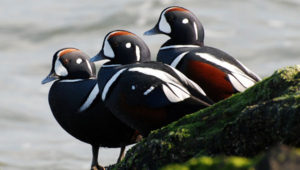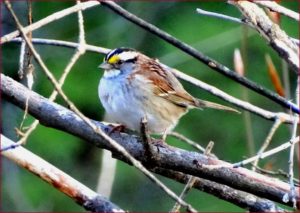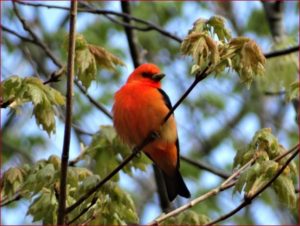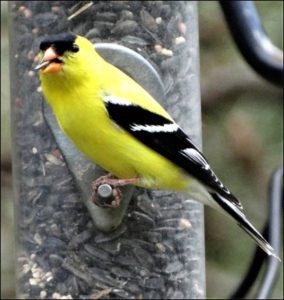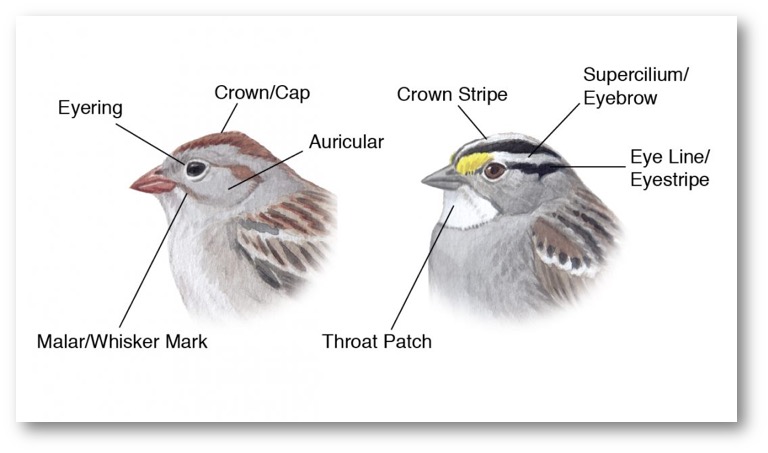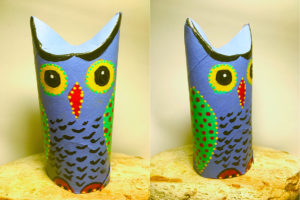Greetings from the Kids’ Corner at Mount Agamenticus! For our sixth season, we’re going digital, and we hope you’ll join us!
It’s bird migration time and Mrs. J is here to help with basic bird identification by sharing resources, photos, and arts and crafts activities to help you learn!
Much of the information shared below comes from the Cornell Lab of Ornithology. This is a wonderful resource for bird enthusiasts, and we encourage families to visit their website and to check out their bird identification app, Merlin. We’ll be sharing links to more resources as our lessons progress!
Another great tool from Cornell is eBird, which allows you to record bird sightings while out in the field. Check out this link for eBird Essentials and a tutorial from the Cornell “Bird Academy.”
This week we’re continuing to hone our bird identification skills with a look at color pattern. We’ll take some advice from the Cornell Lab of Ornithology’s Bird ID Skills, and “focus on patterns instead of trying to match every feather.”
Types of color pattern can be seen in the following photographs. Let’s take a closer look…
Light and Dark … Notice the stark contrast. As seen on Cornell Lab’s website linked above, these Harlequin Ducks on the left are “so strongly patterned that it’s very difficult to mistake them for anything else.” It’s unlikely you’d confuse these uniquely patterned birds with any other species!
Bold and Faint … Sparrows are some of the toughest birds to identify in North America.
On the White-throated sparrow to the right, you’ll notice the bolder facial markings, the black eyestripe, the white crown and “eyebrow,” the yellow lores (section on a bird’s head on either side from the base of the bill to the front of the eyes), and the white throat patch bordered by a black “whisker” (malar stripe).
Outrageous Color … Male Scarlet Tanagers, according to the Cornell Lab of Ornithology’s All About Birds, are “among the most blindingly gorgeous birds in an eastern forest in summer, with blood-red bodies set off by jet-black wings and tail. They stay high in the forest canopy singing rich, burry songs. The yellowish-green, dark-winged females can be harder to spot until you key in on this bird’s chick-burr call note. In fall, males trade red feathers for yellow-green and the birds take off for northern South America.”
Goldfinches – A Familiar, Colorful Bird
To the left is a backyard bird you might be familiar with, the American Goldfinch (Carduelis tristis). Another example of a bird’s bold, contrasting Light & Dark color pattern. This male is bright yellow, with a black forehead and black wings with white markings. There are many yellow and black birds, but only this one has the color pattern and markings exactly like this.
But wait! Mr. Goldfinch doesn’t always look this bright! When he visits the bird feeders here in winter, he looks more like this, on the right.
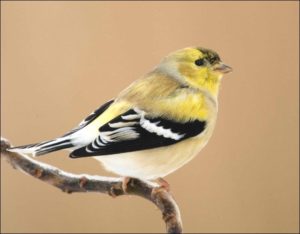
Photo by MDC Staff, courtesy Missouri
Department of Conservation
Notice how his bright yellow is now and a brownish color on his shoulders, back, and chest, and his black forehead spot is faded. Even his beak is a brownish color! We might think that we are seeing two different kinds of birds! Sometimes birding gets very confusing indeed.
Still, he has that stand-out wing pattern with the “white stripe” against the black wing. When we see Mr. Goldfinch again in early spring, we notice that his bright colors return very gradually – just like the amount of sunlight we get increases in length every day, as the season changes. Gradually he replaces the old brown feathers with bright yellow ones, as his forehead grows more and more black. Notice the beak changing color as well!
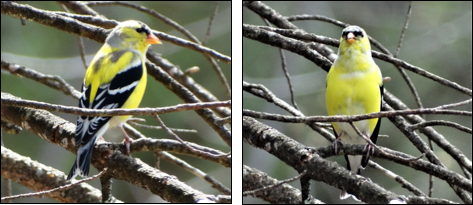
Photos by Mrs. J
When we see Mr. Goldfinch again in early spring, we notice that his bright colors return very gradually – just like the amount of sunlight we get increases in length every day, as the season changes. Gradually he replaces the old brown feathers with bright yellow ones, as his forehead grows more and more black. Notice the beak changing color as well!
 Enter, Mrs. Goldfinch. These are her summer, or “breeding” colors. She looks similar to her mate, but not as brightly colored and more greenish-yellow. Here is Mr. and Mrs. Goldfinch at the thistle seed feeder, side by side – Mrs. is on the right. The female Goldfinch also changes colors at the end of the breeding season. The picture below from the Audubon Field Guide shows her in her “non-breeding” plumage. Once again, the bright colors fade to drab. And there again is the white wing bar.
Enter, Mrs. Goldfinch. These are her summer, or “breeding” colors. She looks similar to her mate, but not as brightly colored and more greenish-yellow. Here is Mr. and Mrs. Goldfinch at the thistle seed feeder, side by side – Mrs. is on the right. The female Goldfinch also changes colors at the end of the breeding season. The picture below from the Audubon Field Guide shows her in her “non-breeding” plumage. Once again, the bright colors fade to drab. And there again is the white wing bar.
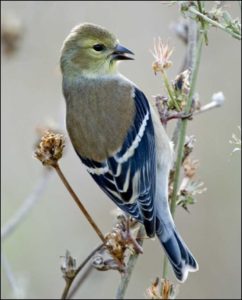
from the Audubon Field Guide
Click here for some facts about Goldfinches!
The many different markings on birds help us to correctly identify them, so it is helpful as you become more and more observant, to learn different parts of a bird in order to share the language of field guide books and other birders. As we have just referred to the “wing bar” on the Goldfinch, so we might also refer to the “eyestripe”, “crown” or “throat patch”.
Activity & Resource: All About Bird Anatomy Interactive Bird Anatomy Learning Tool from Cornell
Activity: Toilet Paper Tube Owl What do we do with all these toilet paper rolls? Let’s get creative and explore color pattern by making a parliament of owls!
- Instruction Sheet Available Here.
Activity Variation: Toilet Paper Tube and Pinecone Owl
- Instruction Sheet Available Here.
Color – A Closer Look
From the Cornell Lab of Ornithology: “As one might expect from the amazing diversity of colors and patterns exhibited by more than 10,000 bird species found in the world, birds can see color. The colors in the feathers of a bird are formed in two different ways, from either pigments or from light refraction caused by the structure of the feather. In some cases feather colors are the result of a combination of pigment and structural colors. The greens of some parrots are the result of yellow pigments overlying the blue-reflecting characteristic of the feathers.” Learn about How Birds Make Colorful Feathers.
Activity: Bird Color Match Try to name each color, then match the birds to their color name!
- Full-sized Activity Sheet available here.
Activity: Warbler Coloring Sheet Warbler plumage during breeding season can be fantastically colorful! Color your own warbler.
- Full-sized Activity Sheet available here.
Join in on the conversation here on Facebook! Thank you for learning with us!
Last modified: June 17, 2020

